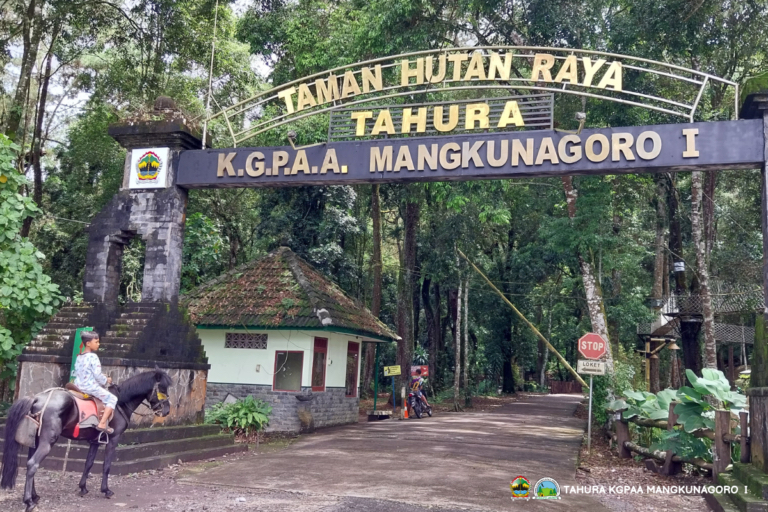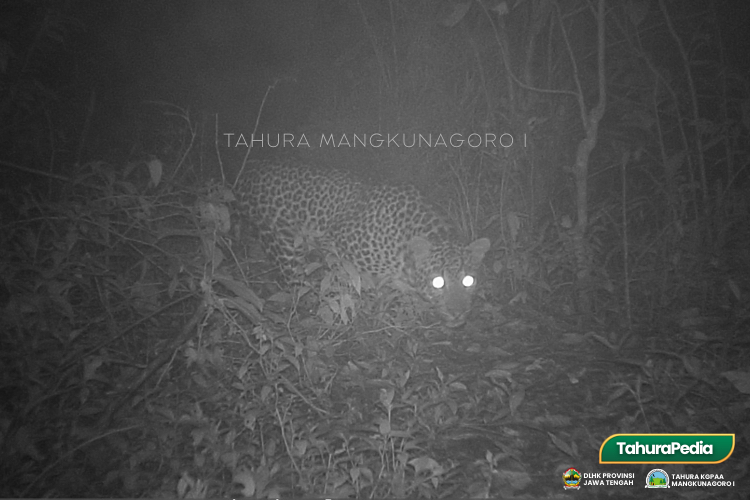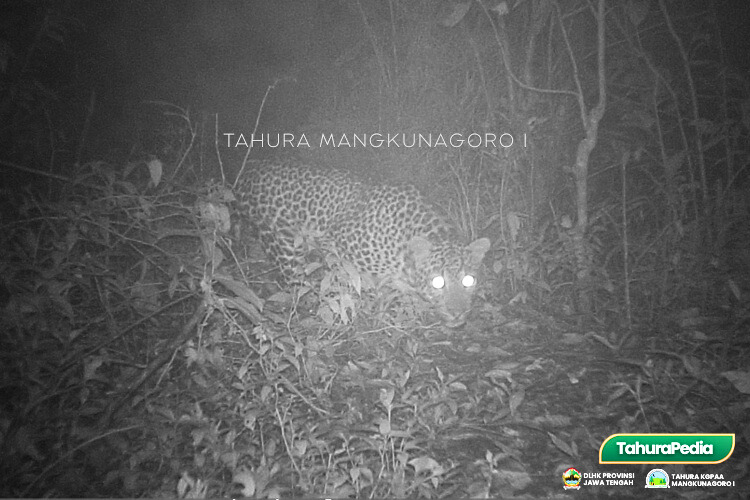- A rare Javan leopard was recorded on camera in Mount Lawu forest, Central Java, after officials installed camera traps following a hiker’s report.
- The endangered big cat’s presence highlights Mount Lawu’s ecological importance, where Tahura Mangkunagoro park conserves diverse plants, birds and mammals.
- With only around 35 Javan leopards left in the wild, the sighting underscores urgent threats to the species from habitat loss, hunting and human pressure.
- Authorities and conservation groups are expanding camera-trap surveys and preparing a 2026–2031 action plan to safeguard the species through better monitoring, habitat protection and community engagement.
A camera trap in an Indonesian mountain forest has recorded a rare Javan leopard, sparking renewed conservation monitoring efforts in the area.
The Javan leopard (Panthera pardus melas) was captured on a camera installed in the Mount Lawu forest area of Central Java province, according to a July 29 post by the KGPAA Mangkunagoro I Grand Forest Park (Tahura) on Instagram. The recording, which shows the endangered big cat strolling calmly past the lens, was obtained after officials followed up on a hiker’s report of a leopard sighting along a trail.
Dhidhit Suryono, field coordinator team leader at Tahura Mangkunagoro, said the cameras were installed for two full weeks around the reported site to ensure optimal observation results and increase the chance of capturing footage. The exact location of the recording is not being disclosed, he added, to prevent potential poaching.

The effort involved four officers and two local residents, Dhidhit said. Of the 10 cameras they carried, only three worked in the field, one of which captured the leopard before the observation period ended. He said this backed their hypothesis that the animal regularly roams the area.
Tahura KGPAA Mangkunagoro I is a 231-hectare (571-acre) forest park on the slopes of Mount Lawu, a 3,265-meter (10,712-foot) volcano on the border between Central and East Java provinces. The park plays a key role in conserving biodiversity, hosting a rich array of plant species (more than 100 species across 50 families, and valuable medicinal and endemic plants) and wildlife, including high bird diversity (51 diurnal bird species, several of which are protected) along with mammals like the highly elusive Javan leopard. The park also hosts biodiversity-based initiatives such as ecotourism and environmental education, highlighting its status as both a conservation and learning hub.
Bambang Doso Pramono, the acting head of Tahura Mangkunagoro, said camera traps have been used here for wildlife monitoring since 2012. He added the park is beefing up its patrols, engaging local communities as ranger partners, and raising awareness through social media as part of its long-term efforts to protect the Javan leopards.
“As for the leopards, their population size is still unknown, as no inventory has been conducted yet,” he said. “Conservation success is not only measured by the appearance of protected species, but also by the effectiveness of area management.”

The Javan leopard, classified as endangered on the IUCN Red List with an estimated wild population of around 35, is Java’s last surviving top predator following the extinction of the Javan tiger (Panthera tigris sondaica). It faces mounting threats from hunting, habitat loss and dwindling prey.
Conservationists have welcomed the sighting of the leopard on camera as a sign the apex predator still roams Mount Lawu’s forests — an encouraging indicator of ecological integrity and confirmation that the Lawu landscape continues to provide suitable habitat for its prey such as barking deer and primates.
“Furthermore, this evidence serves as a compelling rationale for safeguarding the Lawu region and also promoting its biodiversity,” Andhika Ariyanto, a Ph.D. candidate at the University of Twente in the Netherlands, who specializes in Javan leopard ecology and conservation, told Mongabay in an email.
There’s shrinking space for leopards on Java, an island just one and a half times the size of Ireland but home to 145 million people. Conservationists say the loss of suitable habitat calls for urgent action through public awareness, conflict reduction, habitat management, and connecting fragmented populations.
A 2023 study found Javan leopards lost more than 1,300 square kilometers (500 square miles) of habitat between 2000 and 2020, with their most suitable areas shrinking by more than 40%, prompting conservationists to call for detailed population studies and stronger protection beyond existing reserves.
“Every piece of valid information about leopards is very important, especially in areas where the primary management focus is not on wildlife sanctuaries, such as Tahura and its surroundings, which are protected forests,” Erwin Wilianto, co-founder and board member of the NGO Save Indonesian Nature & Threatened Species (SINTAS Indonesia) and project coordinator for the Java-Wide Leopard Survey (JWLS).
The JWLS is a first-of-its-kind, large-scale, collaborative initiative led by Indonesia’s Ministry of Environment and Forestry with partners like SINTAS and private donors. It uses hundreds of camera traps and genetic analysis of fecal samples to comprehensively assess the population status, structure and prey preferences of Javan leopards across the remaining habitats throughout the island.
The target is to complete all data collection and analysis by the first quarter of 2026, Erwin said. He added his team would use the data and information to conduct a population viability analysis (PVA) and formulate the necessary interventions for each landscape. The output will form the core of the government’s Javan Leopard Conservation Strategy and Action Plan 2026-2031.

Conservationists say expanding systematic camera-trap surveys and improving ecological connectivity are critical steps to safeguarding the Javan leopard and its prey. Mount Lawu, a key protected forest landscape in Java, faces multiple challenges from illegal hunting, human-wildlife conflict and heavy tourism pressure, making stronger monitoring, community engagement and cross-agency cooperation essential.
“Camera traps are a reliable tool for wildlife monitoring, enabling authorities to quantify biodiversity, including species richness, occupancy, population density, and sex ratios, as well as to identify human-related threats,” said Andhika, whose 2024 study identified the richness of animal life in areas with more Javan leopards.
“Additionally, the comprehensive island-wide coverage of Java will produce standardized, comparable data that will directly influence the conservation of Javan leopards,” he added.
Basten Gokkon is a senior staff writer for Indonesia at Mongabay. Find him on 𝕏 @bgokkon.
See related story:
Where Javan leopards thrive, so do other wildlife, study shows
Citations:
Ariyanto, A. C., Wang, T., Skidmore, A. K., Wibisono, H. T., Widodo, F. A., Firdaus, A. Y., … Murdyatmaka, W. (2024). Range-wide camera traps reveal potential prey species for Javan leopards. Global Ecology and Conservation, 53. doi:10.1016/j.gecco.2024.e03020
As’ary, M., Setiawan, Y., & Rinaldi, D. (2023). Analysis of changes in habitat suitability of the Javan leopard (Panthera pardus melas, Cuvier 1809) on Java Island, 2000-2020. Diversity, 15(4), 529. doi:10.3390/d15040529
FEEDBACK: Use this form to send a message to the author of this post. If you want to post a public comment, you can do that at the bottom of the page.
